Meet the manager: Oxford GC’s Stephen Nicholson
He talks about how he became one of the youngest golf club managers in the country – of one of the oldest clubs, plus the club’s plans to improve its finances
Unusually for the golf industry, the club, established in 1875, is nearly five times older than you, aged 31. What academic / career path did you go down that saw you end up its manager?
I started playing golf at 12 years of age. I was into all kinds of sports growing up, but once I got the grasp of the game, I rarely did anything else. When looking for a college to attend after high school my father asked me what I wanted to do.
‘Not a clue dad’ I replied.
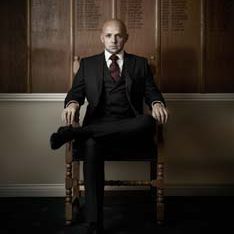
He then mentioned that the college my sister had been attending, Myerscough College near Preston, Lancashire did a national diploma in golf studies.
He asked me, ‘Would that be of interest to you?’
‘What… so I can study golf?!’ I asked.
‘Yes’ he said
And, away we went!
I remember meeting my course lecturer, Rick Daniels, who is still at the college now, and I still speak to and see on a yearly basis, usually for some kind of get together or reunion, and he informed me of my acceptance onto the course and what would be involved in the next two years, living onsite at the college. It didn’t really register with me at the time but moving away from home at 16 was quite the experience, along with a course that was far more in depth than I could have ever imagined. ‘I mean, how much is there to know about golf’ I naively thought, which meant that I had to ‘grow up’ quickly in order to get to grips with my new found environment.
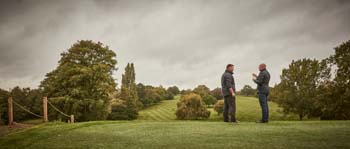
The course flew by and unfortunately at the culmination of this qualification my mum passed away, making that summer quite a struggle indeed. I quickly found myself asking myself the same question as when I was finishing school, ‘what next’?
Rick informed us all that Myerscough College and the University of Central Lancashire were linked and that we did have the option to study a BA in golf management and the course would continue to take place at the college. Question answered and my academic career continued.
These few years were fantastic. The university formed a partnership with the European Tour to offer volunteer opportunities to its students which led to some amazing trips to the Mallorca Classic, Alfred Dunhill Champs and PGA Championship at Wentworth, allowing us to gain practical experience of working and running high profile golf tournaments.
I still played a good deal of golf in the early part of my time at university and managed to play my way onto the university team for a couple of years as well as competing successfully to qualify for the tour finals of the Collegiate Tour three years running, although the only trophy I won was the infamous ‘coming out of the closet’ award at the annual tour dinner. My personality can be rather camp as the award would suggest!
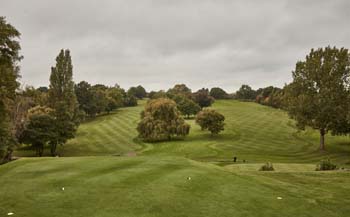
As university progressed I played golf less and less. I started to get old before my years, having shacked up with my girlfriend at the time and was looking for a better paying part-time job. I stumbled across a sophisticated clothing retailer to the male gentry in the centre of town and just asked the blunt question, ‘got any jobs going?’
Two days later I started a trial shift, and by the end of the day I was working for Slaters Menswear, a retailer of suits, formal and casual clothing.
What did you learn from selling suits?
I loved to dress in a suit for work and enjoyed the buzz of a busy retail environment. I was always competing with the top sales people to have the best day, week and month fighting to win the bonus payments that went along with such a performance.
Where I struggled primarily was with my customer service. At Slaters the whole company had started out and focused solely on providing amazing customer service. They had customer service feedback forms to give every guest served and if you fell below a 95 per cent service standard you wouldn’t be entitled to any additional employee benefits or bonuses! When I started my feedback score was under 90 per cent, woeful in comparison to the standard set. I had to make a conscious effort to improve!
I spent time listening and watching my colleagues observing how they conducted themselves whilst interacting with our consumers and I pinched some of the methods they used whilst offering my own guest experience journey.
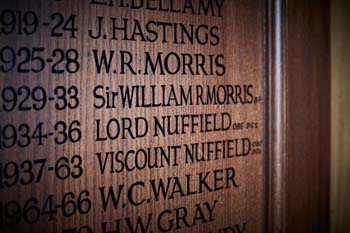
The two main things I added were: when asking a question REALLY listen to the response and engross in that conversation, and secondly, leave my mark.
Listening intently to what my clients were saying allowed me to pick up on any interesting things they had to say and continue to ask questions. No matter who you are, people love to talk about themselves. Leaving my mark came in the form of reiterating my name and the benefits of filling out the customer service questionnaire, which gave them a chance to win £100 to spend in store, giving my business card and finally a firm handshake.
Adding the personal touch certainly did the trick and my scores started to improve, finally hitting the coveted 95 per cent customer service satisfaction score a little after a year of implementation.
The knock-on effect from this also meant that people would ask for me by name when coming back for another visit. I would also remember repeat clients’ names which increased my sales record further!
This became my realisation in practice that offering a great service and the sales cycle are linked. Keeping customers is always easier than acquiring new ones, this ideology has remained with me throughout my career to date.

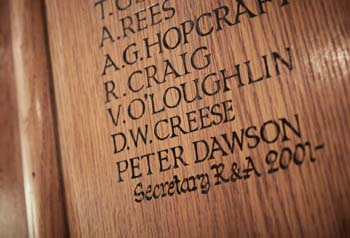
You went on to sell advertising. How did this contribute to the skill sets you use today?
I started selling advertising around the time of the recession, back in 2009, perfect timing! This role was a self-employed position with no basic salary but, I was lured by the pull of the 40 to 50 per cent commission structure on any advert that I managed to sell. I travelled all over the UK, starting off mainly selling adverts in bridal brochures before moving on to cinema magazines, poster boards and plasma screens.
The role could not have been more different from my previous employment at Slaters. This was an old school role. Get out the yellow pages and make 300 calls a day to as many different businesses as possible to arrange appointments for later in the week. I would then pack a bag and stay away from home for a night or two every week, meet my appointments face to face and sell them the advert on the spot. It was cold, hard selling!
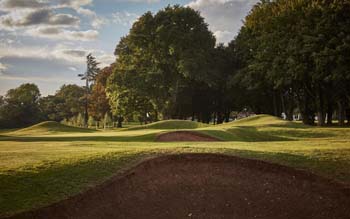
I used this role as a platform to start my own online golf magazine business, which I successfully built up from scratch, launching a few editions to a following of over 20,000 subscribers before me and my business partner decided to go our separate ways, selling the company for parts in 2014.
The initial advertising role made me a better negotiator and honed my ability to assess consumers’ buying behaviours and patterns, and pitch accordingly in order to have the best chance of winning a business deal.
Launching my own magazine was my first attempt at developing my own business and it taught me a lot of lessons mainly through the mistakes that I made. I had to learn aspects of human resources, health and safety, IT systems, marketing to name just a few and I would now be considered a ‘jack of all trades’.
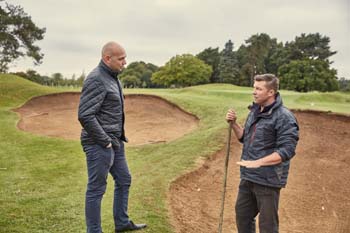
For small business owners it is useful to have knowledge of many different areas and as I have continued in my career this ability has served me well in being able to progress my career and now oversee the business from a general manager role.

You then became group golf marketing manager at a major golf resort in Leeds and this year was appointed manger at Oxford GC. What are the areas of focus for you moving forward?
The main area of expertise that the directors were looking for at the interview stage was for a commercially-driven individual.
Like many golf clubs, membership has been decreasing and the club has been relying more on other revenue streams, but still the underlying business has been losing money and the need for change became apparent.
To ensure the underlying business is sustainable the two key areas from a very top level are increasing revenue and decreasing expenditure.
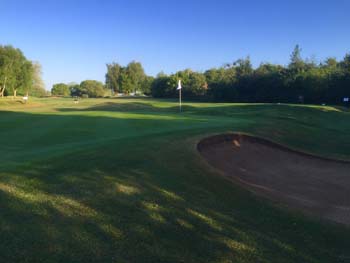
There are many aspects to look out whilst undertaking this, including membership – retention and acquisition; pay and play golf; conference, events and function room hire; increased bar revenue and gross profit; an improved food and beverage operation; quality of the golf course and facilities; and cost control.
The first part of this year’s plan was to set a realistic but challenging budget to increase income and run a zero-based budget on golf course expenditure. This helped to identify the two segments of our business that we would work on as a priority.
As a members’ golf club we rely heavily on a healthy membership to supplement the maintenance work we undertake on the golf course. Upon my arrival, we conducted a study asking our members questions about their experience of the club and course: what they like; don’t like; what they would like to see improved and so on.
We have since acted on some of the areas that they highlighted and this consultative approach has been well received and shall continue in the future to help keep members involved in the progression of the club and in turn retain the members we already value. We have worked hard to offer members additional benefits: discounts at hotels, car dealerships and golf at other courses as well as deriving referral incentives for anyone they recommend joining as a new member.

From a cost control point of view we have implemented a procurement process that ensures when we buy materials we are getting the correct quality of product for the very best price available. We have also identified areas of potential cost savings and made changes to utility suppliers as well as smaller changes such as replacing bulbs for LED lighting for an immediate impact. We are also researching more efficient methods to save money, such as the use of solar panels and water bore holes to help future proof the business.
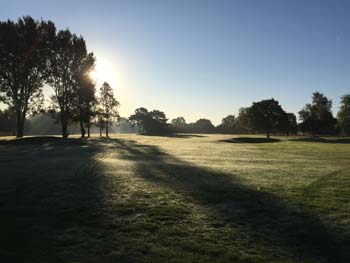
What are the biggest challenges you currently face?
As a business the golf club can’t entice golfers if the course is in poor condition, so the quality of the course is always of paramount importance.
We have been working alongside master greenkeeper and consultant agronomist Greg Evans to help improve the playing surfaces and general look of the course, our greens have been fantastic all year and we are confident the rest of the course will continue to pick up and improve as our maintenance plan is carried out. As a Harry Colt designed golf course we are blessed with one of the best layouts in the country. This layout, along with great quality, are the two biggest factors that keep our golfers coming back to play our course again and again.
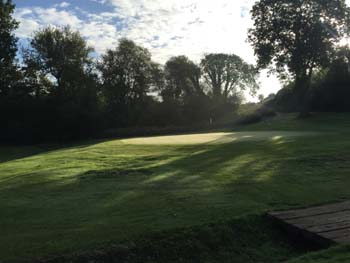
The costs of maintaining a course to the high levels we strive to achieve are really quite staggering. With limited resources and budgets this area continues to stay high on the agenda as it impacts our members’ satisfaction and the majority of our business revenue potential.
The other area that is challenging is changing attitudes. I sometimes question ‘why have we done that in the past?’ To get a response of ‘well that’s the way we have always done it’. But if you always do what you’ve always done then you’ll always get what you’ve always got, it’s about educating people as to the reasons why we believe changing something is worthwhile and reinforcing this with case studies or the necessary data to shift their thinking.
Sometimes people will only be happy once they see palatable results. I’m pleased to say that some of my marketing initiatives so far this year have fallen into this category and now we are seeing results, the attitudes have well and truly transformed!
Membership revenue has grown by over £20k since your arrival. How?
It has been a staggering growth really and we continue to welcome new members every week. We have carried out our research on golf clubs in the area and we have started to market the club towards a niche that fits our quality of course, our history and our vision for the future. We have been active on social media and interacting with golfers on various platforms, namely Facebook, Twitter and Instagram, to start to portray our image better and just by posting regularly we have gained an affinity with our audience.
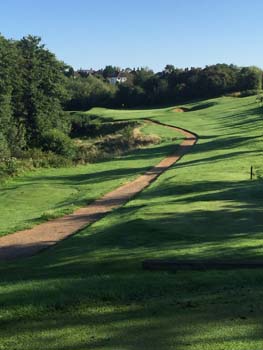
We established a marketing plan for the business with a big emphasis on attracting new members. Increasing our social media presence has enabled us to run limited time offers specifically to our targeted demographic. We have also partnered with well-known local brands to help raise the profile of the golf club by association and the results speak for themselves with business leads coming through from our partners and every income stream performing well above last year.
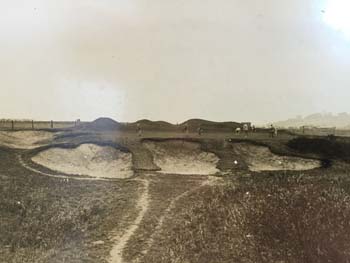
Tell us about the partnerships with local businesses.
After conducting our initial market research I couldn’t believe how many people didn’t realise the golf club existed. There are residents of Oxford that have lived here for over 50 years and don’t know a golf course exists right on their doorstep. However people are more familiar with brands such as the De Vere Oxford Thames hotel, Johnsons’ Cars and Bicester Shopping Village so it makes sense to work with these types of businesses to establish a brand partnership.
We identified companies based on brand recognition, proximity to the golf club and willingness to work with us. Not all the brands we identified wanted to work with us, but conversely not all of the brand partners that we now have relationships with were on the initial list. As we started to communicate with brands and network at events, speaking with people about our vision for the club I would get recommended to speak ‘to such a person at such a place’. From a conversation with the MD of Oxford United Football Club we managed to tie up a partnership with the Oxford City Stars ice hockey team, who have grown their following exponentially over the last year or so. By creating these partnerships we are able to offer discounted rates for their staff and clients and in return we get to advertise on their premises and offer our members special rates for their services, it’s a reciprocal arrangement that can be very rewarding for both parties.
We have worked with our partners on many things already this year, from gala weekends to launching a new membership campaign with success. We look forward to continuing this work with local businesses to add value to the membership where we can.
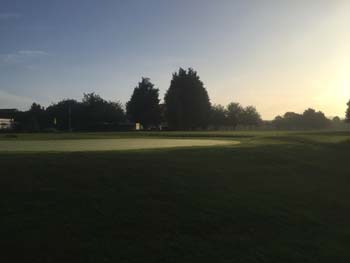
What changes have been made to the food and beverage offering?
When we conducted our members’ survey at the start of the year over 70 per cent of our members had experienced issues with the catering at the golf club. Poor food, poor service, no flexibility in opening times, expensive prices and so on. One member even recommended that we ‘escort that man from the premises!’ We needed to act!
Our catering provision has been externally contracted for over a decade. We had tried to change the ways of the previous caterer but there was no real improvement so we have contracted someone new. The new team have worked at the golf club behind the bar in the past so they already know all the members and have a good rapport with them. The impacts of this change have been recognised immediately. The quality of the food is ten times better and the service is delivered with a smile. Nothing is ever too much trouble and fresh cake is available every day, much to the detriment of my waistline!
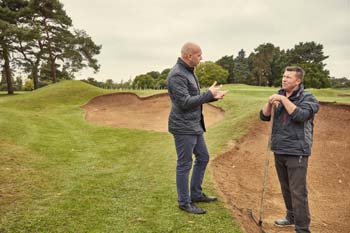
The main aim was to improve the quality of the food and the general experience for the members and visiting golfers alike. In the future we aim to develop our catering in order to offer dining experiences such as Sunday lunches, curry nights and romantic meals for two. Utilising our city centre location by advertising to a different, more generic audience will help to provide an enhanced revenue stream as well as increase our visibility to the local people of Oxford and our surrounding areas.
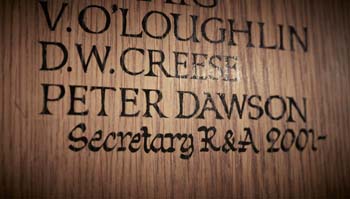
Has bar revenue changed this year as well?
When I arrived the club had not increased prices behind the bar for three years. In this time there was numerous price increases from the brewery and the business was soaking up these increases which affected our gross profit margin. Along with our research into the club’s position in the market we investigated prices of drinks at local public houses and other golf clubs in the area. The results showed that we could increase prices by around four per cent and still be very competitive. During this time, we also raised the members’ discount from ten to 15 per cent. Members now pay ever so slightly less than they did previously with visitors to the club paying the enhanced tariff and this more than bridges the gap in terms of increased revenue and sustained gross profit.
We are dealing with enquiries in a more professional manner, structured pricing with incremental discounts and flexibility to fit with most organisers’ requirements. By doing this we have managed to increase our sales conversion of enquiries into bookings, the more bookings we have the more money we make!
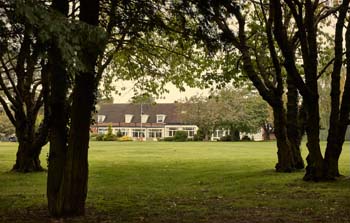
Finally, we have run a summer evening golf and drink offer ‘nine holes and a pint for £12’. The offer has been really popular with at least four golfers booking every week with as many as 10 golfers some weeks. Once they have had their first drink, seldom do they leave it at one and we enjoy the increased revenue generation that goes along with this. Throughout the winter months we will be working to offer ‘burger and pint’ deals, whilst watching the football to try and encourage people to come up and use the club as an alternative destination from other public houses, staying at home and so on.
What is the current membership of the club?
We have grown our membership numbers this year from around 430 to nearly 500 members. The bulk of our members are aged between 60 and 70 years old and 75 per cent of our members are male. This year we have grown the amount of members aged between 20 and 25 years of age. This category now makes up the fourth highest amount of members in the club.
We are targeting people from all different walks of life: juniors, younger people, retiring footballers, rugby and tennis players to name just a few. These are people all looking to remain active whilst socialising with their friends, albeit in a more leisurely way!
We ran a few taster courses in the summer, including tuition, fun games, skills tests and a glass of wine / pint ‘après golf’. The group we had attending loved it and two have since enquired about membership. Over the next couple of years we are aiming to increase the membership by 10 per cent year-on-year.
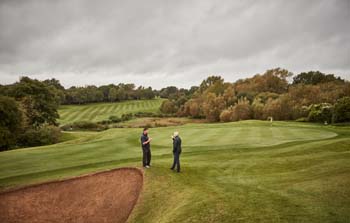
What are you doing to reach out to and grow junior members?
This year we have offered children and grandchildren of current members free membership which has been well received and has encouraged increased participation from the juniors within the club.
However we realise that we need to do more and have since undertaken an action plan with the Golf Foundation and England Golf to help drive tuition from our head professional, Joe Pepperell (brother of European Tour player Eddie) into local schools. Utilising our club for later sessions we can conclude that journey onto the golf course. We will reinforce this process by offering an academy package including membership, continued lessons and equipment to ensure that once these youngsters have a taste of the game we can make it viable for parents and easy for them to get involved.
What do you think are the managerial qualities now needed to meet the demands of members?
You must have a ‘thick skin’, that’s for sure. The club went through a turbulent time before I arrived and unfortunately with so many areas in need of attention, these things take a time to improve so there are always echoes of negative feedback in the background, but communication is critical. Letting the members know what we are doing and trying to involve them in the process where we can helps to minimise these comments and excite the members about the club’s future direction.
I think the scope of the role is so great that to meet the requirement of the position you must be a versatile individual. I enjoy doing many different things in this position as it means that no day is the same, but it’s not for everyone.
Leadership and mentoring are important. I have a fantastic office manager who I can delegate quite a number of tasks to which helps to free up some of my time to mentor other members of the team.
I have learnt so many things by having a go, making mistakes and then problem solving them, and I encourage my team to do the same. From these experiences we can develop a progression plan to help individuals improve their skills, enabling them to take more responsibility in their positions and together we can grow as a team and make the business stronger and more sustainable.
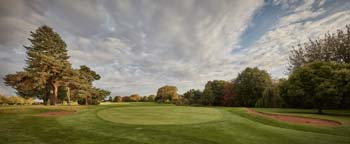
What currently gives you the greatest satisfaction from your job?
We are still early in our journey and having made such an impact on increasing revenue already, this has been the greatest satisfaction so far.
Moving around the club I feel optimistic for the future. I feel as though there is still a lot of room for improvement but we have great potential and we are finalising plans to help bring this to fruition!
The two greatest achievements to date are; replacing the previous caterer with a new ambitious outfit that have in turn revitalised the catering operation and increased members’ and visitors’ satisfaction beyond recognition.
Secondly, the condition of the greens and improving the balance of staff we use out on the course to help deliver our hefty maintenance plan. Which in turn will help provide a consistently good golf course for everyone reaping rewards both now and well into the future!
What changes do you think need to be made to benefit your profession?
During my time here I have been fortunate that the board appreciates the need to operate as a business and not just a members’ club. More clubs are employing younger, skilled managers; Steve Morgan at Blairgowrie being the most publicised case. It bodes well for the industry. I think that more clubs need to continue this trend to ensure their survival, but I also appreciate that resources are limited. I feel that the profession of a ‘golf club manager’ has changed completely over the last decade or so and there may be a niche in the market to offer a management consultancy to golf clubs to mentor and train suitable individuals to take up the mantle of the role whilst being on hand to offer advice, develop and implement strategic plans to ensure their longevity for the future.















An excellent and very informative interview, plenty of material to impliment for my job here in Germany!
Thank you! What a great interview and insight into our business, it even beats some seminars I’ve attended as far as great helpful information, things to impliment here at my club in Germany.